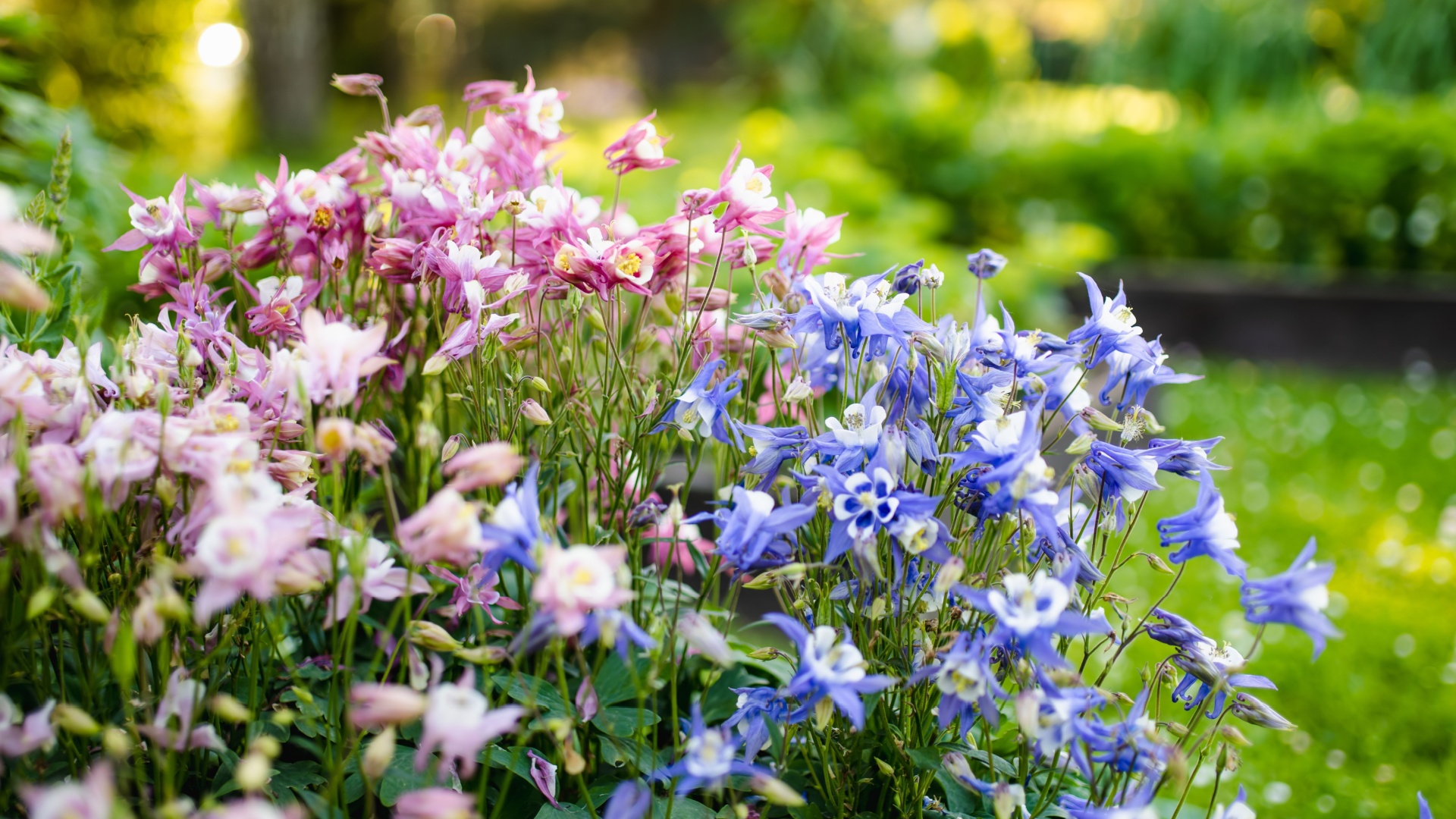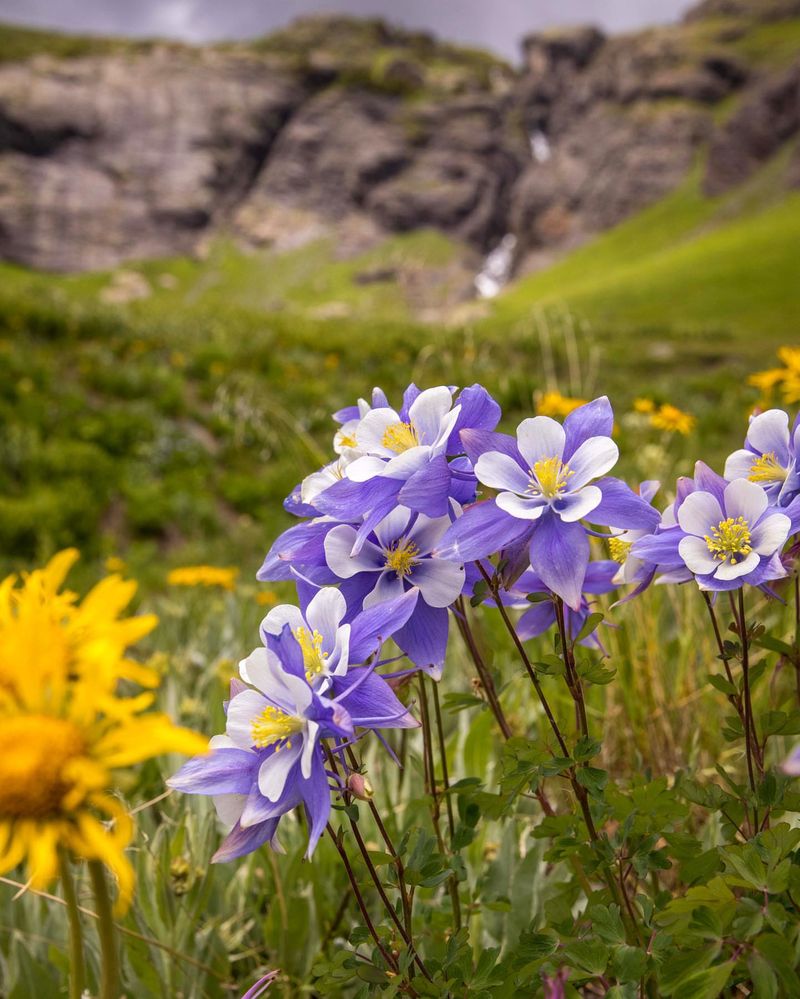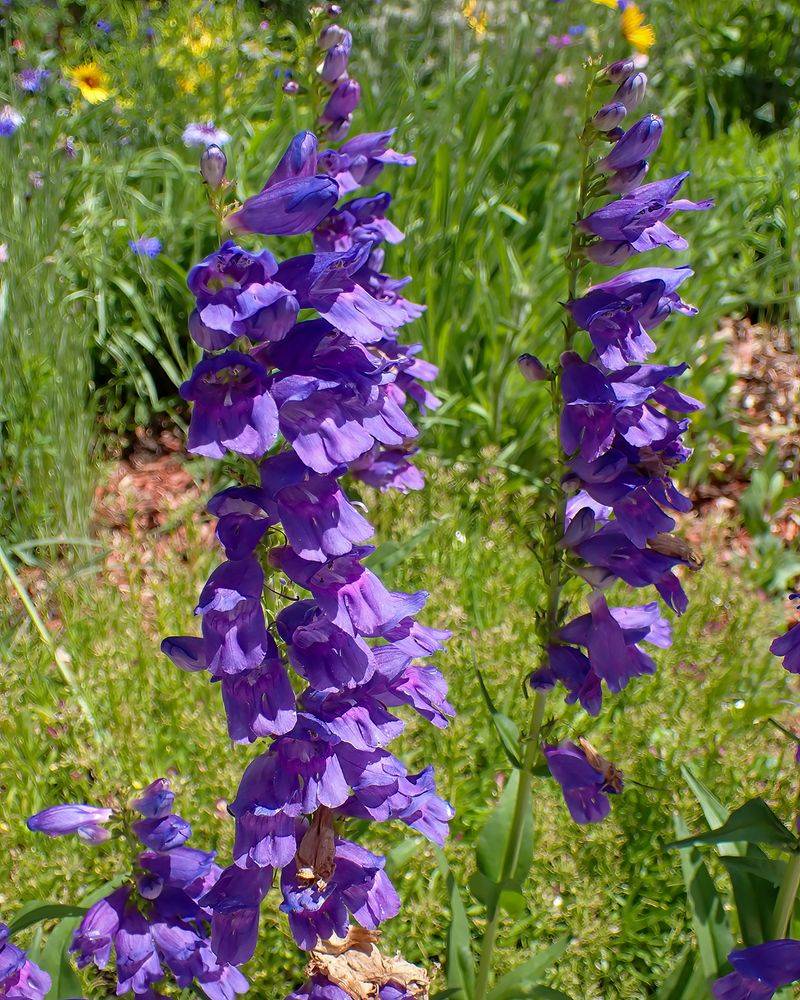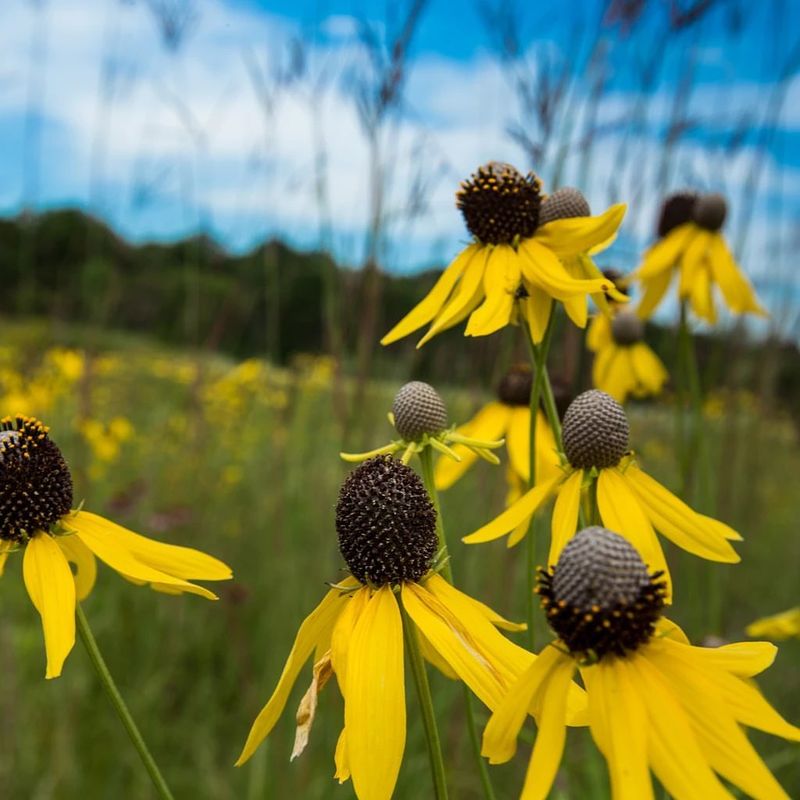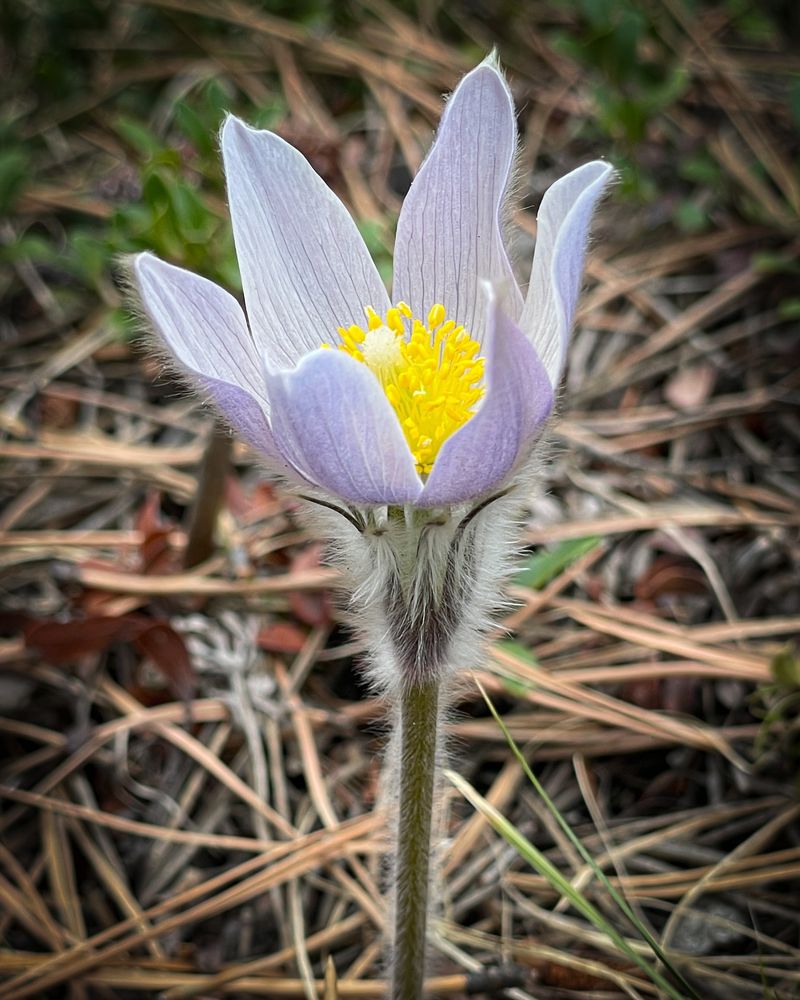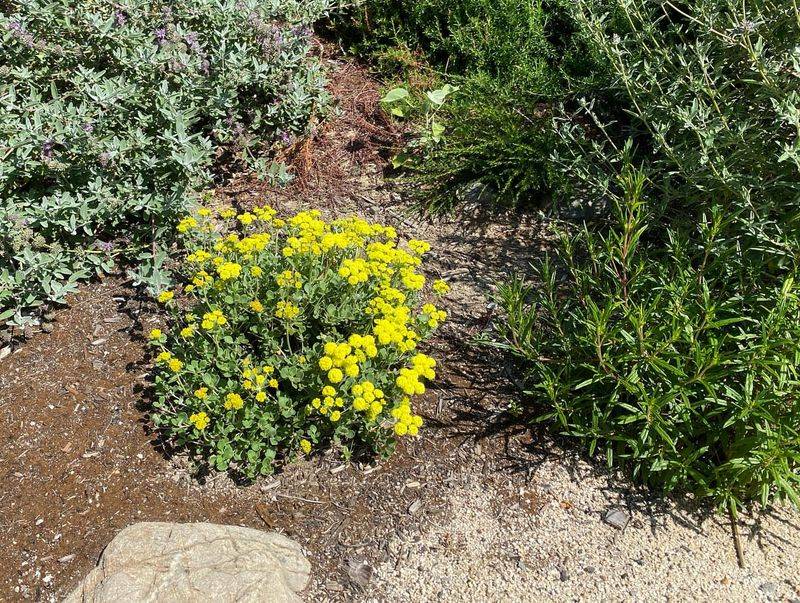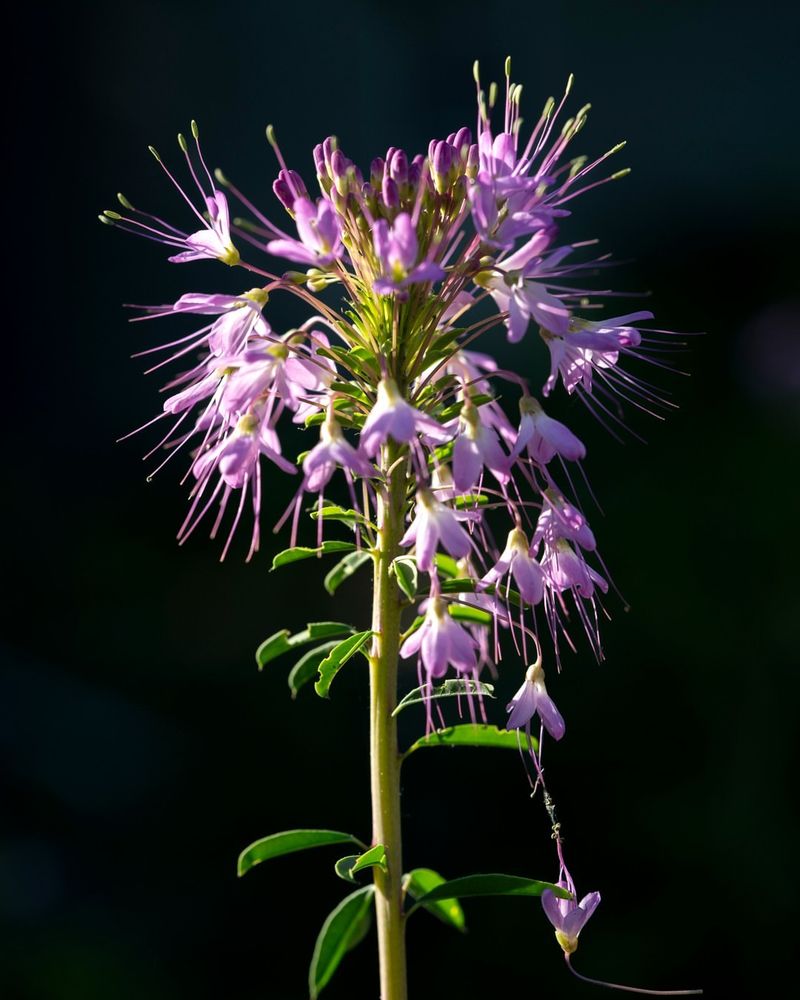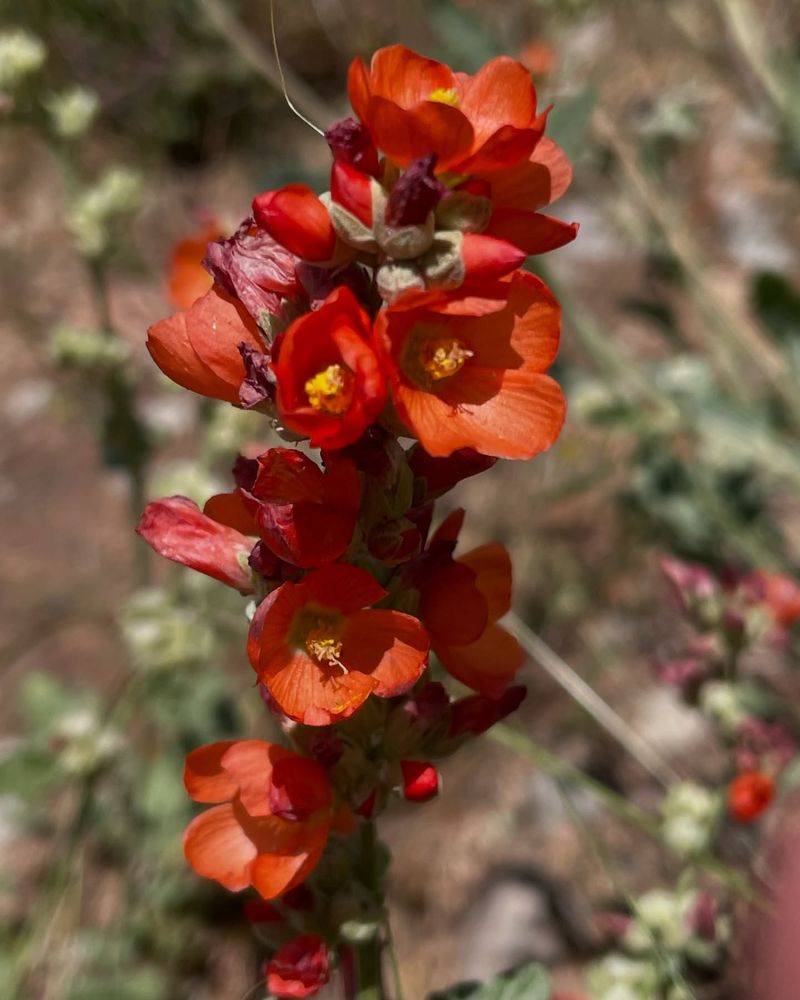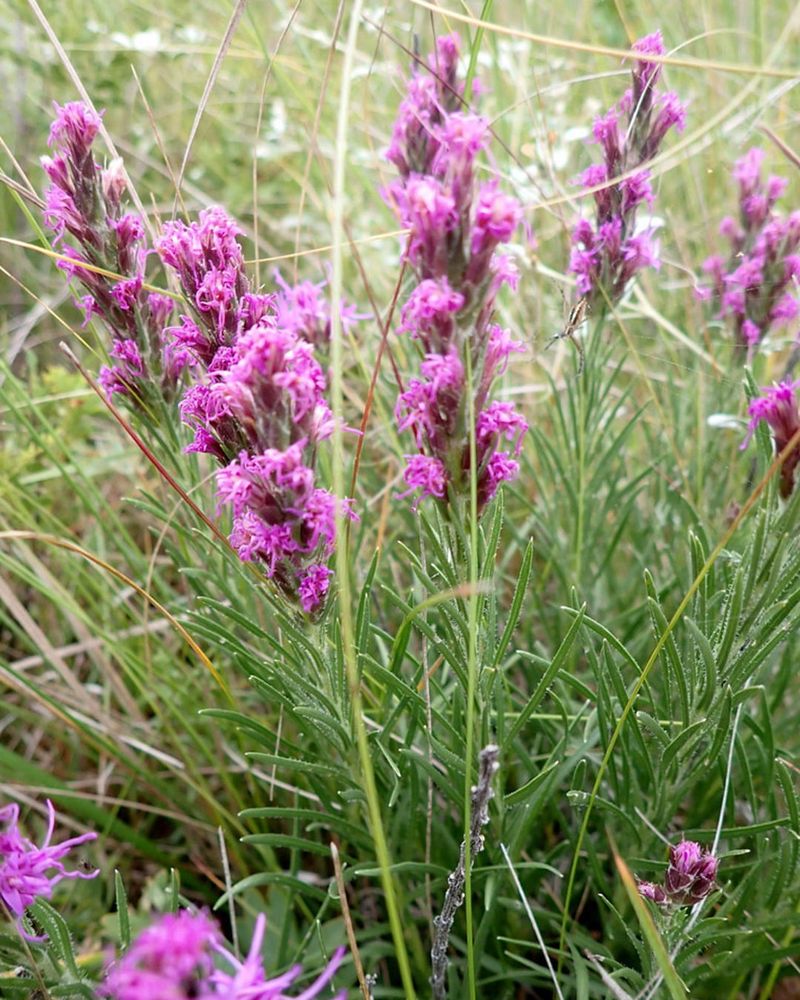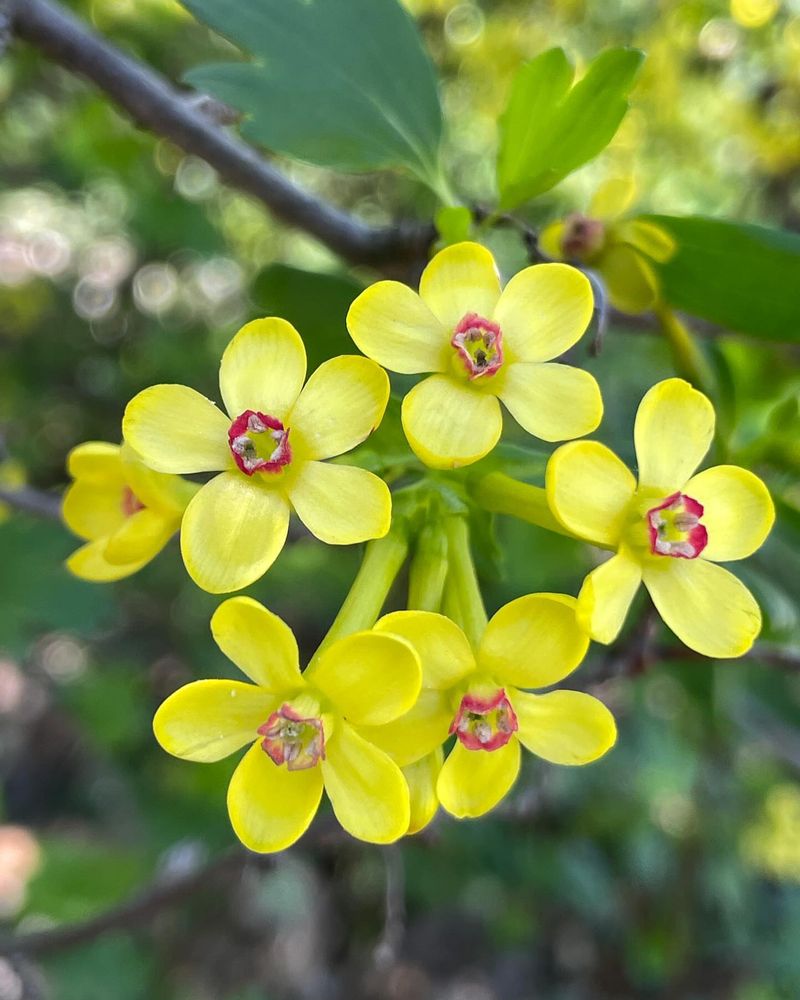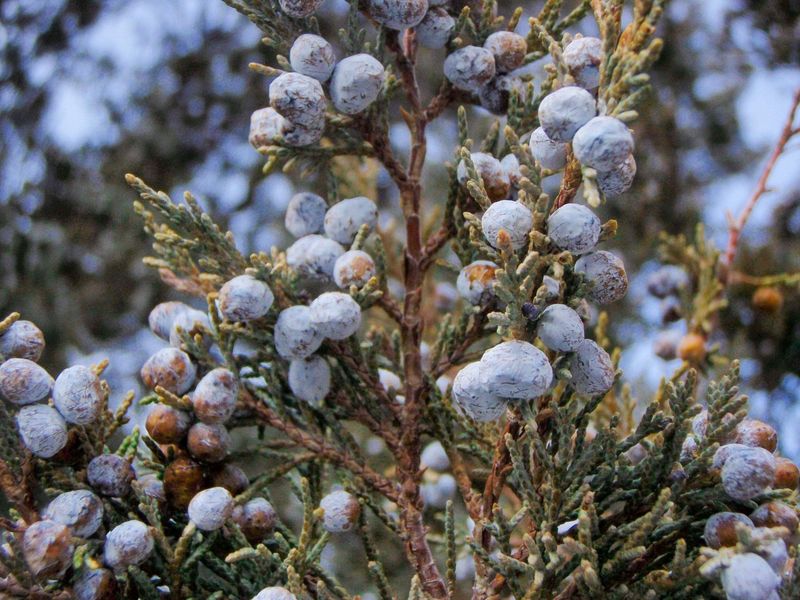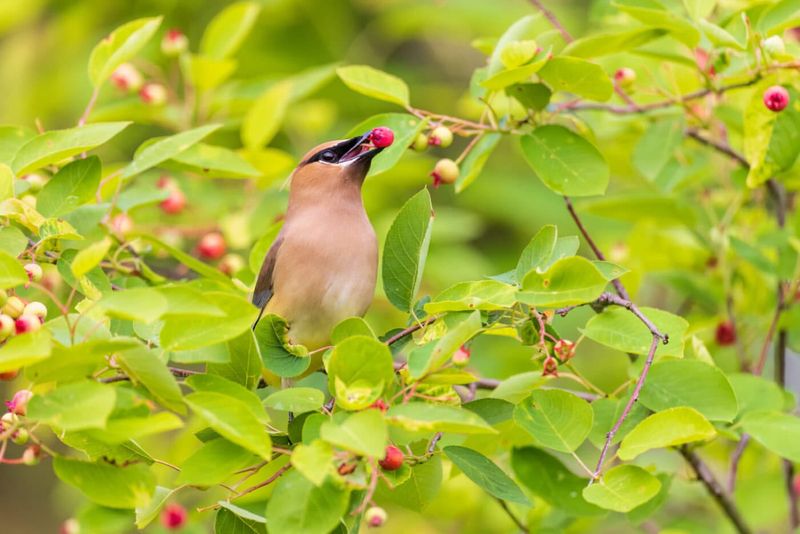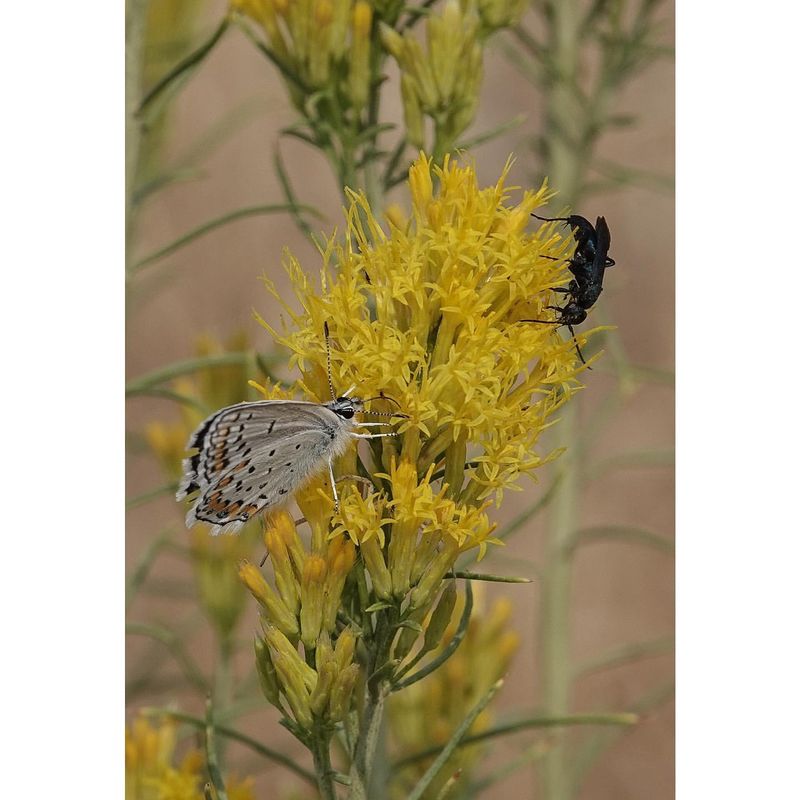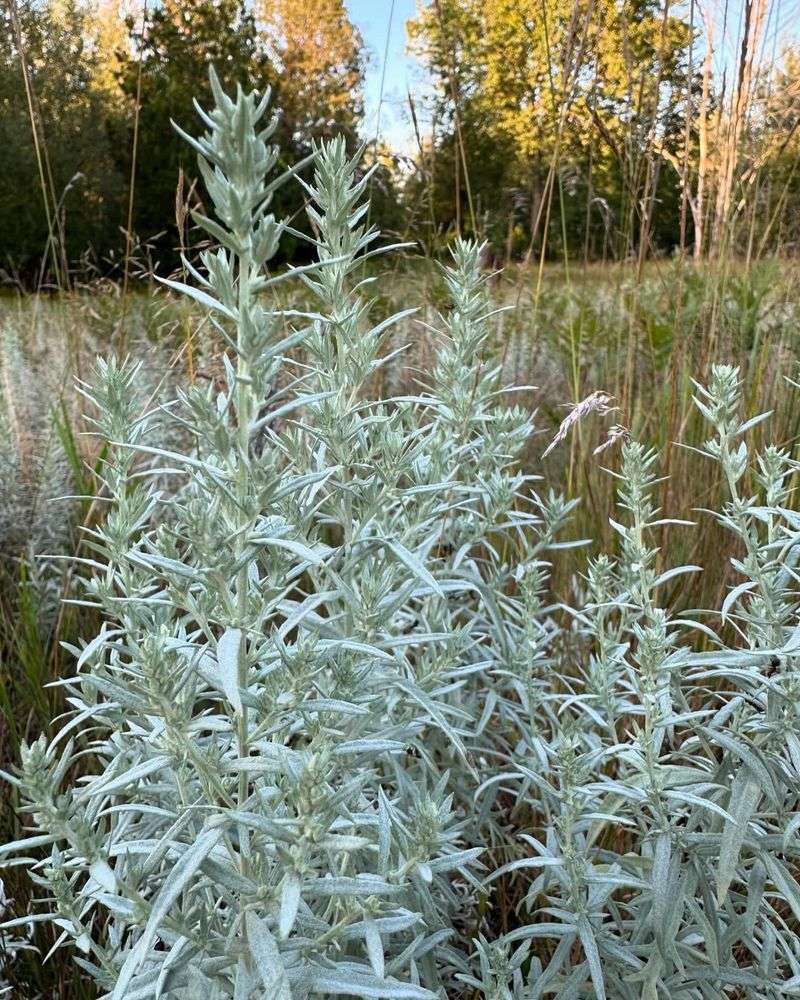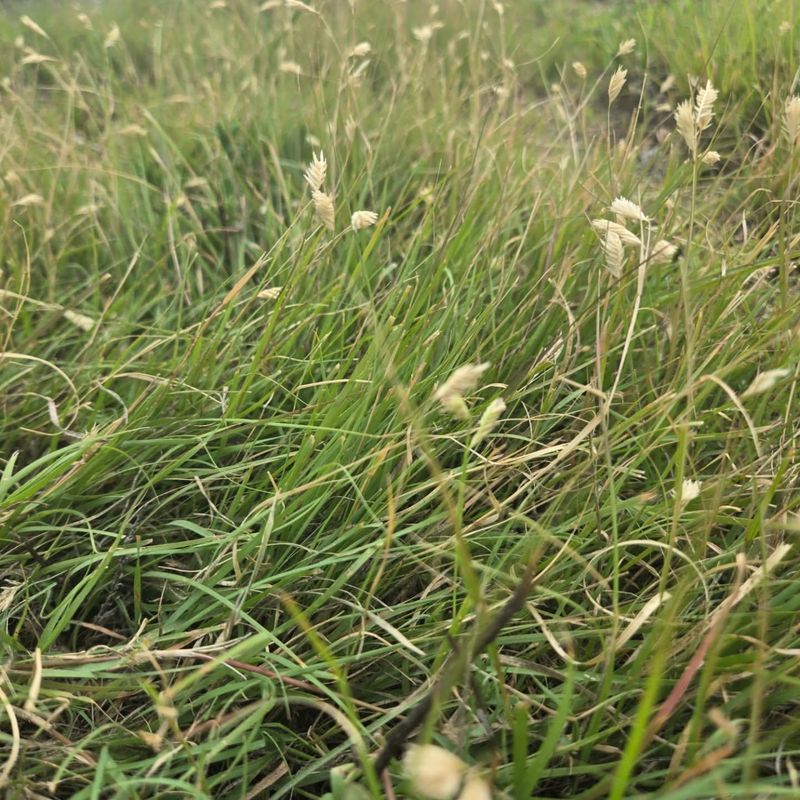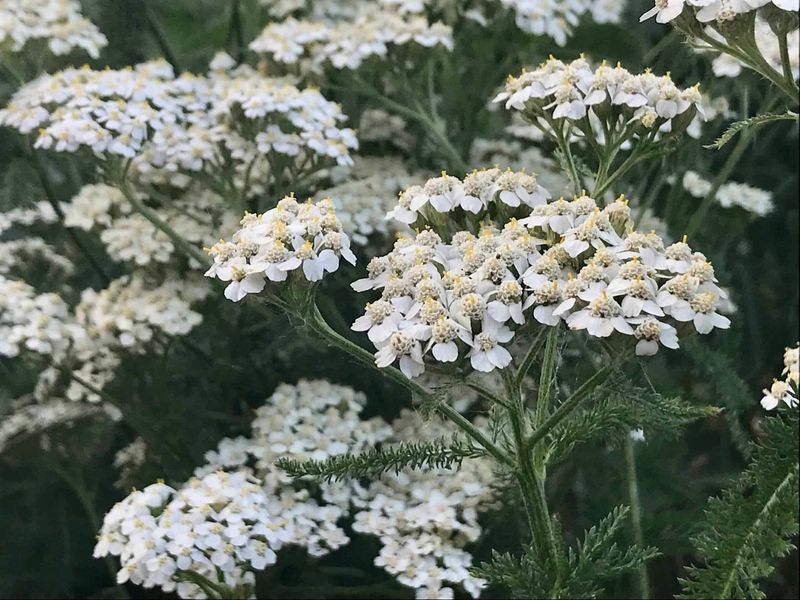Creating a wildlife garden with native plants is one of the best ways to support Colorado’s local ecosystem. Native plants have adapted to our unique climate and soil conditions over thousands of years, making them perfect partners for local wildlife.
When you choose these plants, you’re creating a haven for butterflies, bees, birds, and other creatures that call Colorado home.
1. Blue Columbine
Colorado’s state flower creates a stunning display with its delicate blue and white blooms. Hummingbirds and bumblebees simply can’t resist the nectar-rich spurs that hang from each flower.
Blue columbine thrives in partially shaded areas with well-draining soil. Once established, this perennial beauty requires minimal water, making it perfect for water-conscious gardens. Look for it blooming from late spring through early summer.
2. Rocky Mountain Penstemon
Vibrant purple-blue flowers create a spectacular show on this upright perennial. Hummingbirds zoom in from impressive distances to sample the tubular blooms, while various native bee species depend on its abundant pollen.
Growing 2-3 feet tall, Rocky Mountain penstemon makes a bold statement in sunny, dry areas. Plant several together for a dramatic effect that will have wildlife visitors lining up for a taste. The glossy, dark green foliage remains attractive even after flowering ends.
3. Blanketflower
Sunshine in plant form! Blanketflower’s cheerful red and yellow daisy-like blooms bring endless color to Colorado gardens from early summer until frost. Butterflies flock to these flowers, while goldfinches and other seed-eating birds visit later to feast on the seeds.
Hardy and drought-resistant, blanketflower thrives in Colorado’s poor, dry soils with ease. The plant forms a neat mound about 1–2 feet tall and wide—perfect for borders or wildflower meadows. Even beginning gardeners find success with this low-maintenance native.
4. Prairie Coneflower
Long-lasting yellow petals droop dramatically around a tall, dark center cone, creating a distinctive silhouette in any garden. Bees buzz happily around the flowers while butterflies pause to sip nectar from the sunny blooms.
After flowering finishes, leave the seed heads standing tall. Goldfinches and other small birds will thank you by putting on a show as they balance on the stems to extract seeds. Prairie coneflower thrives in full sun and handles drought conditions like a champ.
5. Pasqueflower
First to bloom in spring, pasqueflower brings a welcome burst of color to Colorado gardens, with its purple cups signaling the end of winter’s chill. Fuzzy stems and leaves give the plant a silvery look, adding texture and contrast to garden beds.
Early-season pollinators rely on these blooms when few other food sources are available. Later, the flowers turn into feathery seed heads that shimmer in the sunlight. For best results in Colorado’s variable spring weather, plant pasqueflower in well-draining soil with morning sun and afternoon shade.
6. Sulphur Flower
Bright yellow flower clusters pop against gray-green foliage, creating a striking ground cover for challenging spots. Countless native bees and butterflies visit these blooms, creating a buzzing hub of activity in your garden.
Growing just 4-6 inches tall but spreading up to 18 inches wide, sulphur flower thrives in rocky, poor soil where other plants struggle. The flowers gradually transform to rusty orange as they age, extending the color show. Perfect for rock gardens or along pathways where pollinators can be easily observed.
7. Rocky Mountain Bee Plant
Tall pink flower spikes create a dramatic statement piece that doubles as a pollinator magnet. Native bees, butterflies, and hummingbirds compete for access to the nectar-rich blooms throughout summer.
Growing quickly to 2-5 feet, this annual reseeds freely once established. The name perfectly describes its wildlife value – bees absolutely cover the plant when it’s in bloom! Rocky Mountain bee plant adds height and movement to gardens while thriving in sunny, dry conditions with minimal care.
8. Scarlet Globemallow
Coral-orange flowers blanket this low-growing Colorado native from late spring through summer. The unusual color attracts hummingbirds and provides nectar for specialized native bees that have co-evolved with this resilient plant.
Silver-gray foliage adds striking contrast to the vibrant blooms. Incredibly drought-tolerant, scarlet globemallow thrives in Colorado’s hottest, driest areas where other plants would wither. Once established, it slowly spreads into a beautiful, easy-care patch that local wildlife loves.
9. Dotted Blazing Star
Tall purple spikes create vertical interest while attracting swarms of butterflies, especially monarchs during their fall migration. The flowers open from top to bottom, extending the blooming period and providing nectar for weeks.
Growing 2-4 feet tall but staying narrow, dotted blazing star fits perfectly into mixed borders without taking up much ground space. The grassy foliage stays neat and tidy all season. Plant in groups of at least three for the most dramatic wildlife attraction and garden display.
10. Chokecherry
White flower clusters transform into dark purple berries that birds absolutely treasure. In Colorado, cedar waxwings, robins, and thrushes flock to ripening chokecherries, turning your yard into a lively bird festival.
Growing as either a large shrub or small tree, chokecherry provides nesting habitat for birds and early spring blooms for native pollinators. Come fall, it adds striking red-orange foliage to the landscape. While the berries are bitter to humans, they make excellent jelly—if you can beat the birds to the harvest!
11. Golden Currant
Fragrant yellow flowers emerge early in spring, providing crucial nectar for hungry bumblebees just emerging from winter hibernation. Later, the bright red berries attract thrushes, waxwings, and other fruit-loving birds.
This adaptable shrub grows 3-5 feet tall and thrives in both sun and partial shade. Golden currant’s berries are delicious in jams if you can beat the wildlife to them! The fall foliage turns a lovely reddish-purple, adding multi-season interest to wildlife gardens.
12. Rocky Mountain Juniper
Blue-green foliage creates year-round structure in Colorado landscapes, offering essential winter shelter for birds. Small, frosty-blue berries feed cedar waxwings, robins, and other species during the state’s harsh, food-scarce winters.
Rocky Mountain juniper, a true Colorado native, can grow as either a shrub or a tree depending on conditions and pruning. Exceptionally tolerant of drought, poor soil, and strong winds, it makes a rugged yet beautiful backdrop for flowering perennials. Its dense growth also provides ideal nesting cover for backyard birds.
13. Serviceberry
Delicate white flowers cover the branches in early spring before the leaves emerge. Later, sweet purple berries attract over 40 species of birds, making serviceberry one of the most valuable wildlife plants you can grow.
Growing as a large shrub or small tree, serviceberry provides multi-season interest with spring flowers, summer berries, and brilliant orange-red fall color. The berries taste similar to blueberries and are delicious in pies and muffins – if you can harvest them before the birds devour them all!
14. Rabbitbrush
Brilliant yellow flower clusters explode with color in late summer when many other plants have finished blooming. The flowers support countless pollinators, including specialized native bees and butterflies preparing for migration or winter.
Silver-gray foliage creates beautiful contrast in the garden all season long. Extremely drought-tolerant, rabbitbrush thrives in the poorest soils with minimal care. The fluffy seed heads provide nesting material for birds while the dense structure offers shelter for small wildlife throughout winter.
15. Sidebells Penstemon
Nodding red tubular flowers hang from one side of the stem, giving sidebells penstemon its distinctive look—and making it irresistible to hummingbirds in Colorado gardens. The flower’s shape perfectly fits a hummingbird’s bill, showcasing a unique and beautiful wildlife partnership.
Thriving in partial shade where many flowers struggle, sidebells penstemon fills an important niche in Colorado’s native plant palette. It forms a tidy clump 12–18 inches tall with glossy green leaves, and its multiple flowering stems create a bold, eye-catching display in shady garden corners.
16. Prairie Sage
Silvery foliage creates a beautiful accent in the garden while the aromatic leaves deter deer and rabbits. Small flowers may seem insignificant to humans but provide important nectar for tiny native bees and other pollinators.
Growing just 1-2 feet tall but spreading wider, prairie sage works beautifully as a ground cover in hot, dry areas. The plant remains attractive through winter, adding year-round structure to wildlife gardens. Crush a leaf between your fingers to release the distinctive sage scent that defines the Colorado landscape.
17. Buffalo Grass
Short, fine-textured grass creates a beautiful lawn alternative that requires minimal water once established. Seed heads provide food for small birds while the dense root system builds healthy soil that supports earthworms and beneficial insects.
Growing just 4-6 inches tall without mowing, buffalo grass forms a soft, gray-green carpet that can handle foot traffic. This true Colorado native evolved with our climate and continues to thrive during hot, dry summers when non-native lawn grasses struggle. Wildlife appreciates the natural cover it provides.
18. Yarrow
Flat-topped white flower clusters serve as landing pads for tiny beneficial wasps and flies that help control garden pests. Butterflies also flock to the blossoms, creating a wildlife hub in your garden.
Feathery, aromatic foliage adds beautiful texture even when the plant isn’t flowering. Extremely drought-tolerant once established, yarrow spreads slowly to form attractive patches. Leave the dried flower heads standing through winter to add structure to the garden and provide seeds for goldfinches and other small birds.

